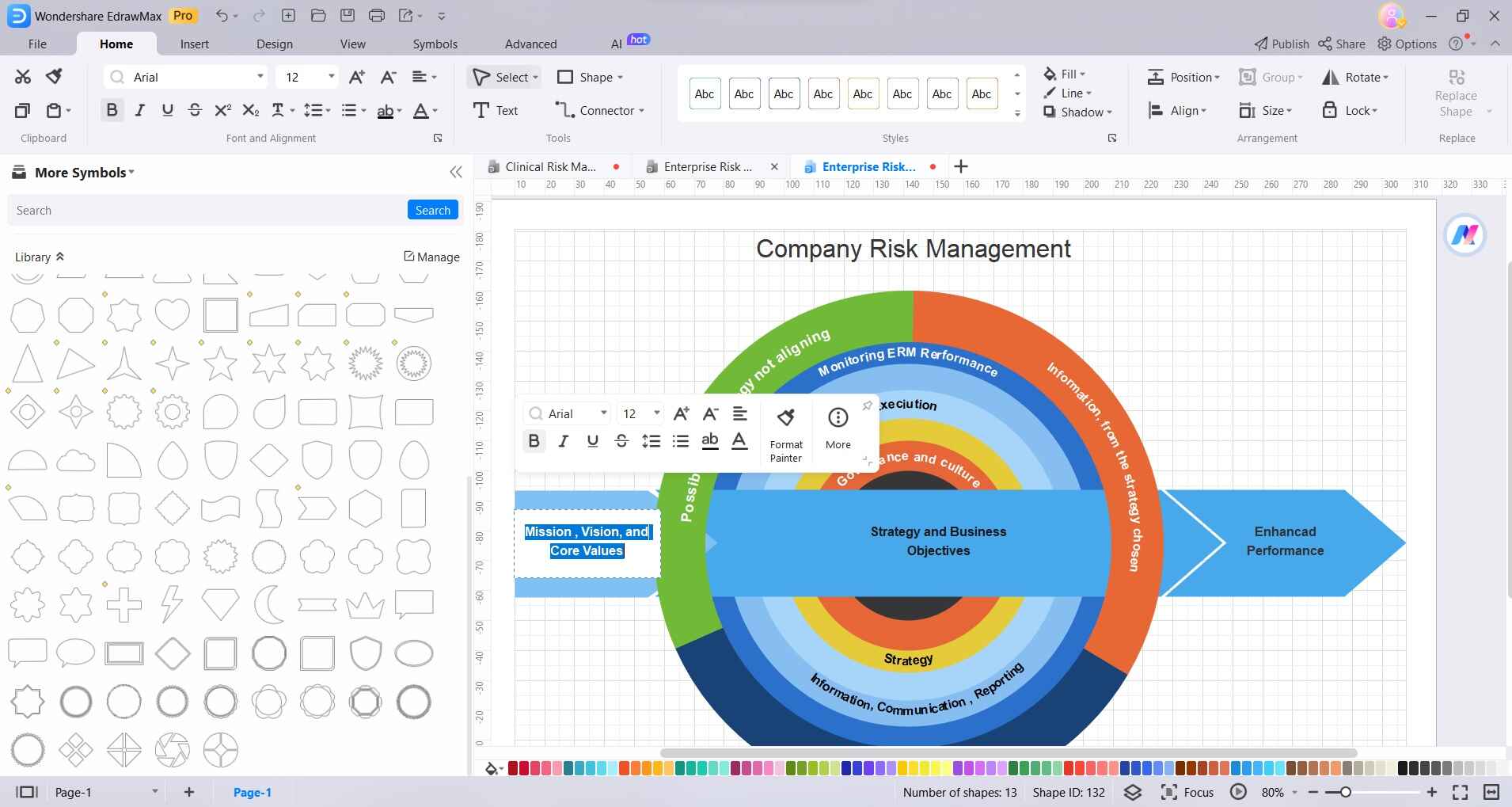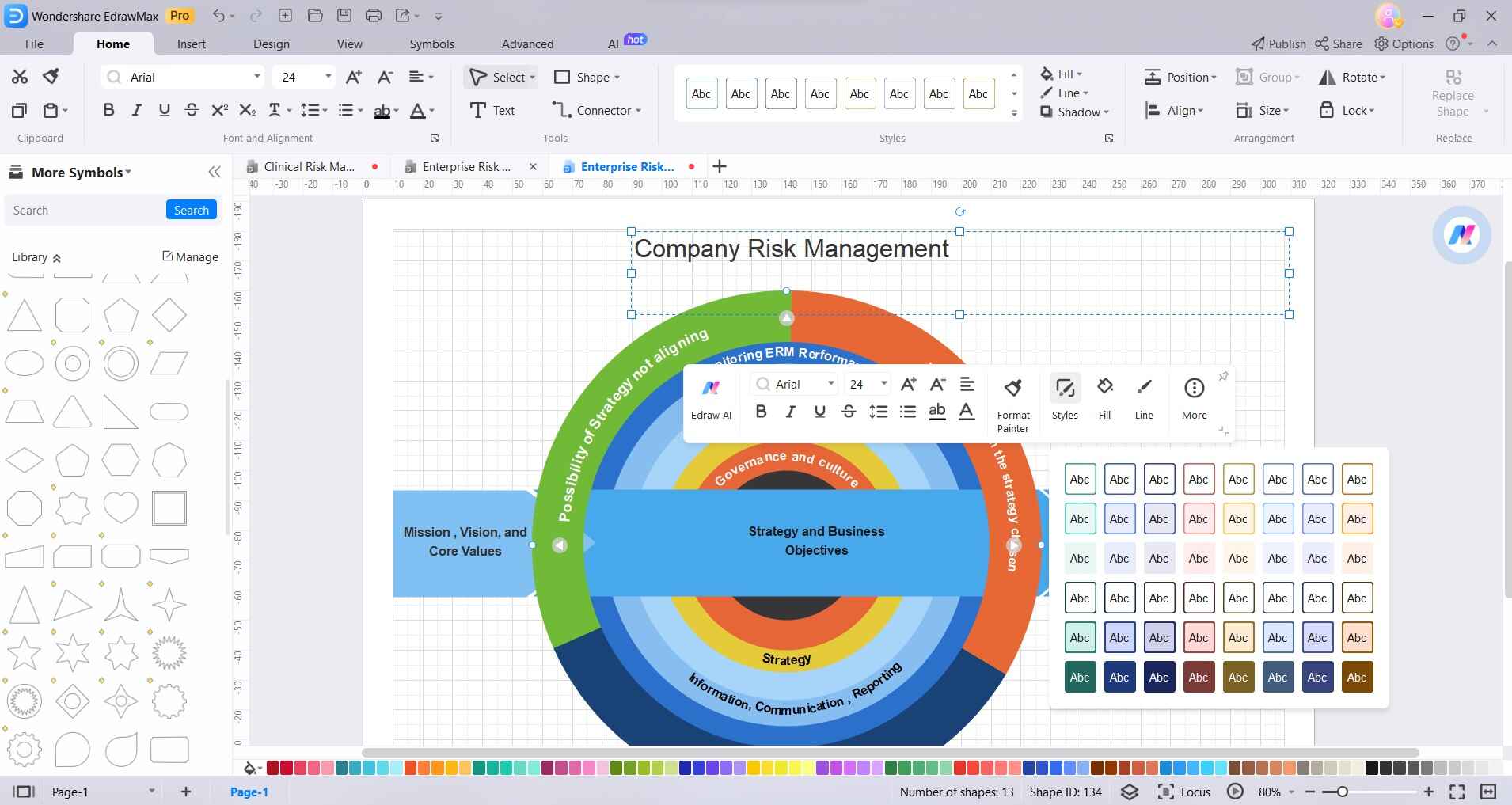Mastering Company Risk Management is crucial in today's dynamic corporate environment for sustained success. This comprehensive guide delves into the intricacies of identifying, evaluating, and mitigating risks that can impact your organization.
Explore proven methodologies and best practices that empower you to navigate uncertainties with confidence. Elevate your risk management proficiency and safeguard your business's future with our expert insights.
In this article
Part 1: What is Company Risk Management?

Company Risk Management is all about identifying and dealing with potential problems that could affect a business. This includes things like financial troubles, operational challenges, and other potential issues. By figuring out these risks and finding ways to lessen their impact, a company can protect its assets and keep things running smoothly. This section will give you an easy-to-follow explanation of the basics of Company Risk Management.
Part 2: Types of Risks Faced by Companies
Running a successful company involves navigating various types of risks. Here are the key categories businesses often encounter:
- Financial Risks: Associated with money matters, like market fluctuations and debt.
- Operational Risks: Stemming from day-to-day operations, such as process failures or supply chain disruptions.
- Strategic Risks: Arising from long-term planning and decision-making, including shifts in market trends or competition.
- Compliance Risks: Relating to adherence to laws and regulations, potentially resulting in legal consequences.
- Reputational Risks: Linked to a company's image and public perception, influenced by customer satisfaction and public relations.
- Cybersecurity Risks: Emerging from digital threats like data breaches and cyber-attacks.
Part 3: The Role of Risk Management in Companies
Risk management is like a safety net for companies. It helps them spot and deal with potential problems before they become big issues. This means making smarter decisions and keeping things running smoothly. It's not just about protecting money, but also keeping operations strong and reputation intact. When companies make risk management a part of their game plan, they're better prepared to face whatever comes their way in the ever-changing world of business.
Part 4: Best Practices in Company Risk Management
Implementing best practices in the company risk register is essential for ensuring long-term success and resilience. Here are key strategies to consider:"
- Regular Risk Assessments: Conduct thorough evaluations of potential threats.
- Clear Risk Ownership: Assign responsibility for managing specific risks within the company.
- Scenario Planning: Anticipate different scenarios to prepare for a range of outcomes.
- Effective Communication: Ensure open channels for sharing risk information and updates.
- Robust Compliance Measures: Stay up-to-date with relevant laws and regulations.
- Continuous Monitoring: Keep a close eye on risk factors and adjust strategies accordingly.
- Adaptability: Be ready to adjust strategies as the business environment changes.
Part 5: Creating a Company Risk Management Model Using EdrawMax
Creating a Company Risk Management Model with EdrawMax is a game-changer for anyone concerned about safeguarding their business. This user-friendly tool empowers you to visually map out potential risks and develop tailored strategies. It simplifies what can be a complex process, ensuring that no critical details are overlooked. With its intuitive interface, even those without extensive technical expertise can construct a comprehensive risk management framework.
Plus, EdrawMax offers a range of templates and customization options, making it adaptable to your unique business needs. In essence, it transforms the daunting task of risk management into an accessible, efficient, and ultimately invaluable asset for your company's success.
Here are the steps to create a company risk management diagram using EdrawMax:
Step1
Open the EdrawMax software on your computer. Navigate to the "Templates" section and choose a suitable risk management template. EdrawMax offers a variety of pre-designed templates for different industries.

Step2
Drag and drop shapes and elements from the template onto the canvas to represent different aspects of risk management, such as risk identification, assessment, mitigation, and monitoring.

Step3
Add labels, titles, and any additional information you want to include. Use connectors or arrows to link the various elements of the diagram.

Step4
If applicable, insert icons, images, or charts to enhance understanding and visual appeal. Click on any entity and select “Styles” to change the formatting style.

Step5
Click on the "Save" button to store your risk management diagram in a location of your choice on your computer. If you need to share the diagram with others, you can export it in various formats such as PNG, PDF, or even directly share it through EdrawMax's cloud service.

By following these steps, you'll create a comprehensive company risk management diagram that visually represents your risk management process using EdrawMax.
Part 6: Technology and Tools for Risk Management
From specialized software to advanced analytics, these resources empower businesses to navigate uncertainties with confidence:
A. Risk Management Software:
Streamline assessment and mitigation with intuitive software, centralizing data for better decision-making and compliance.
B. Data Analytics and Predictive Modeling:
Utilize data-driven insights for proactive risk mitigation, enhancing resilience in a dynamic business landscape.
C. Emerging Technologies in Risk Management:
Explore innovations like blockchain and AI, revolutionizing risk assessment for heightened security and adaptability.
Conclusion
In sum, effective company risk management is the bedrock of a successful company. By recognizing and addressing different types of risks, following best practices, and using tools like EdrawMax, businesses can protect themselves and even find opportunities in challenges.
Remember, being prepared and adaptable is the key to thriving in today's ever-changing business world.




